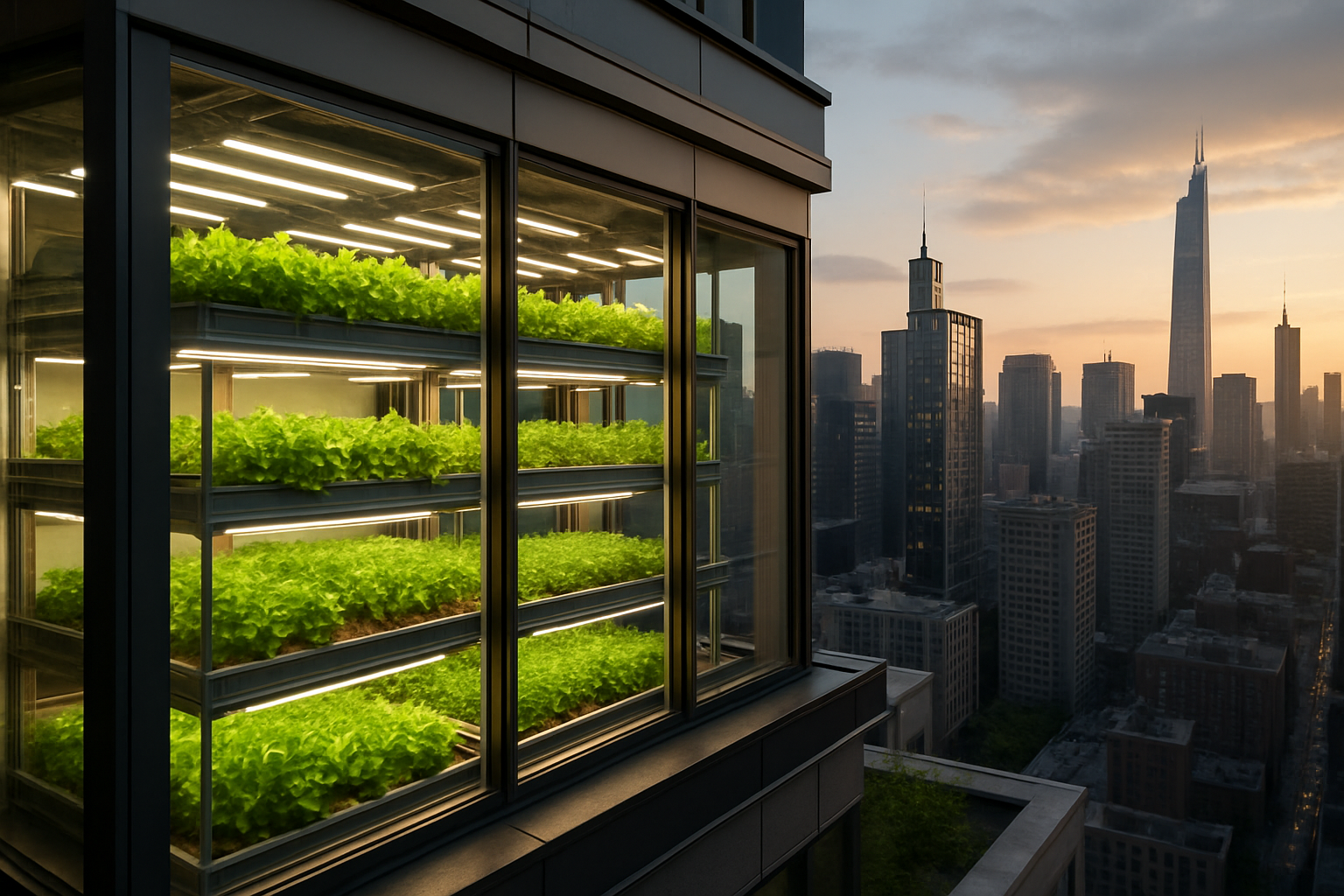Vertical Farms: The Next Frontier in Urban Real Estate
The skyline of our cities is evolving, and it's not just skyscrapers reaching for the clouds anymore. A new trend is taking root in urban centers across the globe: vertical farms. These innovative structures are reimagining agriculture in densely populated areas, presenting a unique intersection of real estate development and sustainable food production. As land becomes scarcer and the demand for locally-sourced produce grows, vertical farms are emerging as a potential solution to urban food deserts and a promising investment opportunity for forward-thinking real estate developers.

The concept of vertical farming isn’t entirely new, with its roots tracing back to the 1915 book “Farms of the Future” by Gilbert Ellis Bailey. However, it’s only in recent years that technological advancements and pressing urban challenges have catalyzed its growth from a futuristic concept to a tangible reality.
Urban Real Estate’s Green Revolution
The integration of vertical farms into urban real estate presents a paradigm shift in how we view city spaces. Traditionally, urban areas have been consumers of resources, relying heavily on rural regions for food production. Vertical farms flip this script, transforming cities into producers of fresh, locally-grown produce.
For real estate developers, this presents an opportunity to repurpose underutilized urban spaces. Abandoned warehouses, parking structures, and even office buildings can be transformed into productive agricultural hubs. This not only addresses the issue of vacant properties but also contributes to urban renewal and sustainability efforts.
Moreover, the inclusion of vertical farms in mixed-use developments can serve as a unique selling point, attracting environmentally conscious tenants and potentially commanding premium rents. As consumers increasingly prioritize sustainability and local sourcing, properties with integrated vertical farms may see enhanced value and marketability.
The Financial Landscape of Vertical Farm Real Estate
While the concept of vertical farming is appealing, the financial viability of such projects is a critical consideration for real estate investors. The initial capital investment for vertical farms can be substantial, with costs including specialized equipment, climate control systems, and potentially complex building retrofits.
However, the long-term financial prospects are promising. Vertical farms can produce yields significantly higher than traditional farms, with some estimates suggesting up to 10 times more crop per square foot. This high productivity, combined with reduced transportation costs and year-round production capabilities, can lead to attractive revenue streams.
Additionally, vertical farms align with many government initiatives aimed at promoting urban agriculture and sustainability. This alignment can open doors to grants, tax incentives, and favorable zoning considerations, potentially offsetting some of the initial investment costs.
Challenges and Considerations for Developers
Despite its potential, integrating vertical farms into urban real estate comes with unique challenges. One of the primary concerns is energy consumption. The artificial lighting and climate control systems required for indoor farming can lead to high operational costs and potentially offset some of the environmental benefits.
Water usage is another consideration. While many vertical farming systems are designed to be water-efficient, the scale of operations in an urban setting necessitates careful water management planning.
Zoning and regulatory hurdles also present challenges. Many urban areas lack clear guidelines for agricultural activities within city limits, requiring developers to navigate complex and sometimes outdated regulatory frameworks.
The Future of Urban Landscapes
As we look to the future, the integration of vertical farms into urban real estate holds the potential to reshape our cities fundamentally. Imagine skyscrapers that not only house offices and apartments but also produce fresh vegetables for their occupants. Picture former industrial zones transformed into lush, productive green spaces that contribute to local food security and community well-being.
The real estate industry stands at the forefront of this transformation. Developers who can successfully navigate the challenges and capitalize on the opportunities presented by vertical farming may find themselves pioneers in a new era of urban development – one where cities become self-sustaining ecosystems, blending living spaces, workplaces, and food production in harmony.
As with any emerging trend, early adopters in the real estate sector will face risks but also stand to reap significant rewards. The successful integration of vertical farms into urban real estate portfolios could lead to diversified income streams, enhanced property values, and a competitive edge in an increasingly sustainability-focused market.
In conclusion, vertical farming represents more than just a novel approach to urban agriculture; it’s a potential revolution in how we conceptualize and utilize urban spaces. For real estate professionals willing to think outside the box – or perhaps more aptly, inside the greenhouse – vertical farms offer a fertile ground for innovation and growth in the ever-evolving landscape of urban development.




